Slideshow: Pieces of UW-Madison astronomy history off to the nation’s attic
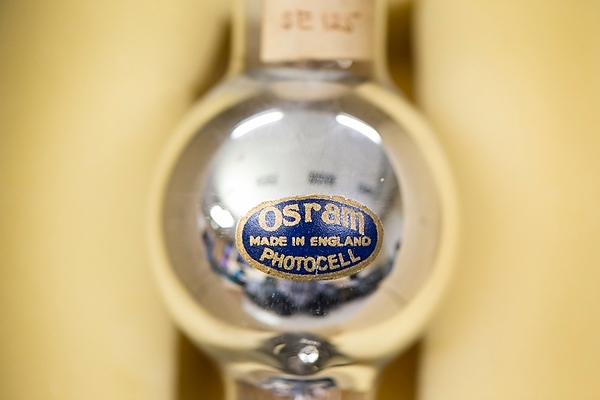
After discovering a decades-old collection, UW–Madison is donating 20 vintage photo detectors, including this British-made Osram photodiode, to the Smithsonian Institution. See the scrolling slideshow below for more photos.
While cleaning out Sterling Hall cabinets that hadn’t been opened in decades, UW–Madison Space Place Director Jim Lattis and colleagues in the Astronomy Department struck historical gold: a collection of old photodiode and photomultiplier tubes dating to the earliest days of photoelectric astronomy.
Such tubes convert starlight into electrical current, which can be measured to provide a quantitative indication of the brightness of the astronomical object.
The university is donating 20 of the vintage photo detectors to the Smithsonian Institution for its permanent collection of astronomical instruments.
Lattis said that as he sorted through these devices, he began to realize the unusual nature of the collection. “Going back over a century, the UW astronomers had carefully and deliberately selected, tested, and compared phototubes that might work for their research … And because UW astronomers were the pioneers of the field, no other place could have preserved such a sample of unique devices.
“I realized we had something unappreciated, indeed unknown; yet the technology lay at the root not only of much scientific research, but of the movie and sound recording business, television technology, military applications, and countless industrial products. As a historian of science, it was pretty exciting.”
Photos by Jeff Miller. Words by Terry Devitt.
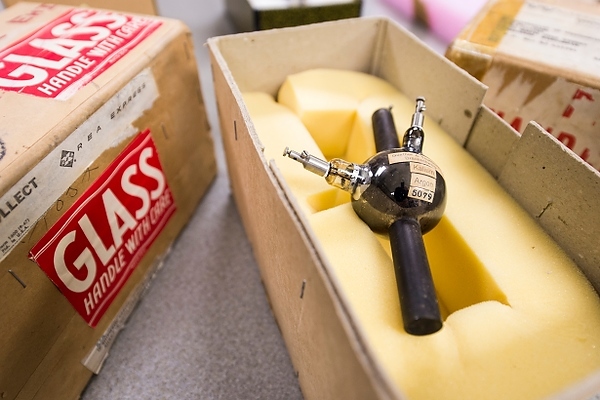
Some of the rediscovered tubes, like this German-made photodiode, were hand made. This tube was purchased in 1925 by Professor Joel Stebbins.
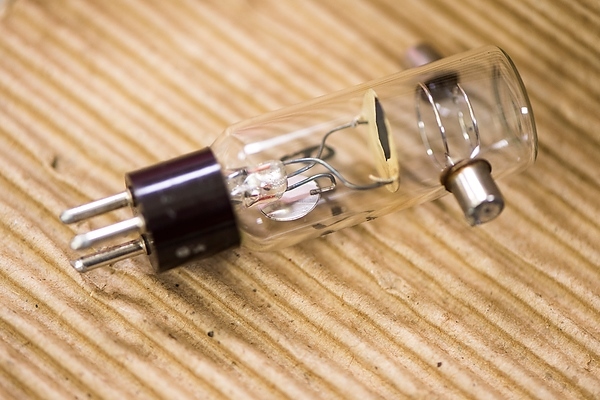
This early commercial photodiode is similar to those used in early sound-on-film (“talkies”) systems. In the 1920s and ’30s, UW astronomers evaluated many such tubes for their potential as scientific light detectors.
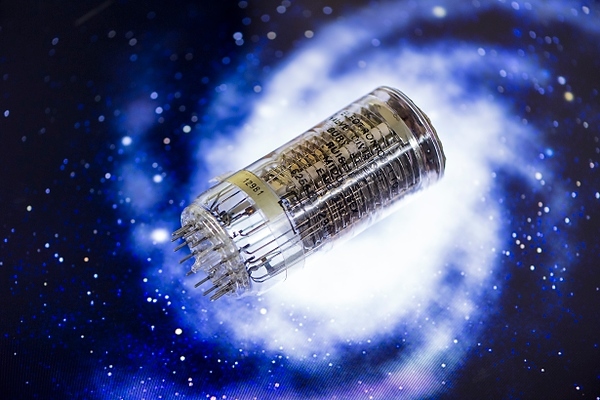
This photomultiplier tube is the type used in instruments built by UW–Madison astronomers for the world’s first true space observatory, the Orbiting Astronomical Observatory, launched in 1966. Photodiodes convert light particles to electrons, typically in a very low ratio: one photon in, a few electrons out. Photomultiplier tubes multiply the electrons, yielding hundreds of thousands per photon. The stronger electrical signal provides access to dimmer targets and more subtle effects than possible with a photodiode.
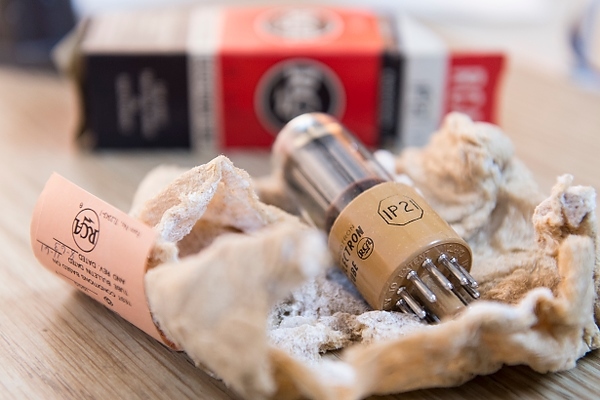
A 1940s vintage commercially produced photomultiplier tube, still in its original box. This particular type was a workhorse of scientific instrumentation for decades. Photoelectric detector tubes act like light bulbs in reverse. They take in light and produce electrical charges, and their behavior is “linear,” which means that doubling the incoming light will double the resulting amount of charge. This property is important for the comparison of the relative brightness of two stars, the fluctuations in the light of a variable star, or the relative brightness of, for example, the red and blue parts of the spectrum of a star.
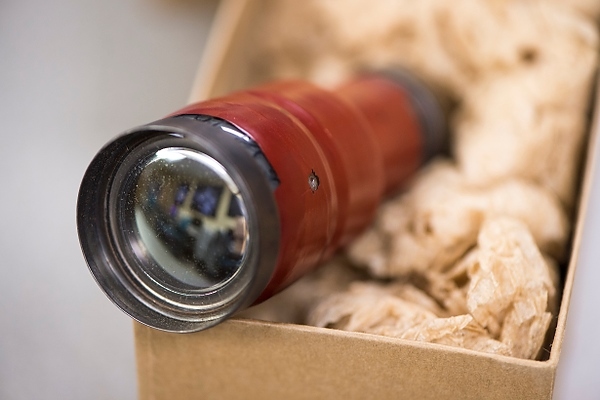
This Farnsworth image intensifier tube is related to early television technology and bears the name of Philo Farnsworth, one of the inventors of television. An image intensifier tube amplifies an entire image at once (a bit like taking a snapshot). It can be used to measure every point in a cluster of stars rather than the single source of light sampled by a typical photodiode or photomultiplier.

Electrostatic image intensifiers like this one were used by astronomers from the 1960s until the 1980s, when solid-state imaging devices supplanted the technology. Such tubes are descended from early military night vision devices. The intensifier greatly brightens the image produced by the telescope. The brighter image could be recorded on photographic film or fed to another intensifier stage for still more brightening.
Tags: slide show, space & astronomy




